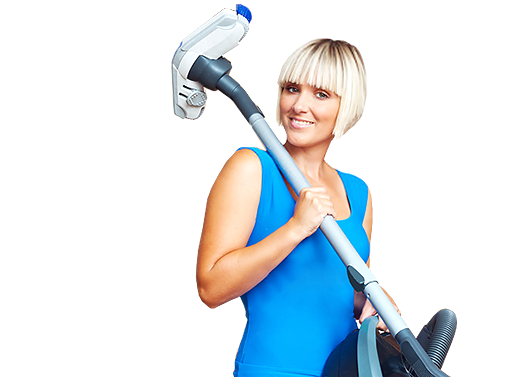Ensure your home's cleanliness with dust-reducing, allergen-free techniques
Posted on 21/08/2025
Ensure Your Home's Cleanliness with Dust-Reducing, Allergen-Free Techniques
Keeping your home clean, fresh, and free of allergens is not just about aesthetics--it's essential for a healthy living environment. In today's world, where air pollutants and allergens are constantly on the rise, adopting dust-reducing and allergen-free strategies has never been more important. Whether you're allergic to dust mites, prone to seasonal allergies, or just want to breathe easier at home, this comprehensive guide will help you create an environment that's both inviting and safe.

Why Focus on a Clean, Allergen-Free Home?
Dust and allergens can impact everyone--especially those with allergies, asthma, or compromised immune systems. Cleanliness isn't just about eliminating visible dirt; it's about addressing invisible threats like dust mites, pet dander, mold spores, and pollen. Here's why a dust-minimized, allergen-controlled home should be a top priority:
- Improved Indoor Air Quality: Dust accumulates on surfaces and floats in the air, carrying allergens that irritate your respiratory system.
- Healthier Living: Reducing dust and allergens can minimize asthma attacks and allergy symptoms.
- Enhanced Comfort: Allergens can cause discomfort, disrupt sleep, and decrease your overall quality of life.
- Long-Term Savings: Preventing dust buildup and allergen accumulation can protect your home's furnishings and HVAC systems.
Understanding the Common Sources of Dust and Allergens
Your first step in ensuring clean, dust-reduced, and allergen-free living spaces is identifying the main sources of household irritants. Common culprits include:
- Dust Mites: Tiny insects that thrive in bedding, upholstered furniture, and carpets.
- Pet Dander: Microscopic flakes of skin shed by cats, dogs, and other animals.
- Pollen: Outdoor allergens that enter your home through open doors, windows, and on clothing.
- Mold Spores: Released from damp, humid areas such as bathrooms and basements.
- Household Debris: Skin cells, hair, fabric fibers, and particles from cleaning products.
How Dust and Allergens Accumulate in Your Home
Understanding how these irritants accumulate helps you target your cleaning efforts effectively.
- Textiles: Carpets, throws, and curtains trap dust and allergens easily.
- Poor Ventilation: Traps airborne particles inside your home.
- Clutter: Provides more surfaces for dust to settle on.
- Infrequent Cleaning: Allows dust to become airborne and recirculate.
Essential Dust-Reducing and Allergen-Free Cleaning Techniques
For effective home cleanliness, a multipronged and proactive strategy is crucial. Below are the most effective dust-minimizing and allergy-reducing methods you can implement:
1. Establish a Consistent Cleaning Routine
Routine is the bedrock of a cleaner, healthier home. Regular cleaning prevents dust and allergens from accumulating to problematic levels. Here's how to create an allergy-friendly household routine:
- Dust Weekly: Use a damp microfiber cloth to trap particles instead of spreading them into the air.
- Vacuum Regularly: Ideally twice a week--for homes with pets or allergy sufferers, even more often. Opt for a vacuum with a HEPA filter for maximum particle capture.
- Wash Linens Frequently: Wash sheets, pillowcases, and blankets in hot water weekly to kill dust mites.
- Declutter: Less clutter means fewer surfaces for dust to settle upon.
2. Upgrade Your Cleaning Arsenal
Effective cleaning goes beyond frequency--it's about using the right techniques and tools:
- HEPA-Filtered Vacuum: Captures 99.97% of tiny particles, including dust mites and pollen.
- Microfiber Cloths: Attract and trap dust better than cotton rags or paper towels.
- Allergen-Proof Bedding: Use covers on pillows and mattresses to prevent dust mite infestation.
- Natural Cleaning Products: Avoid harsh chemicals that may aggravate allergies.
3. Focus on High-Risk Areas
Some areas are more prone to dust accumulation and allergen build-up. Pay extra attention to:
- Bedding and Mattresses: Wash bedding weekly and vacuum mattresses monthly.
- Carpets and Rugs: If possible, switch to hard floors. Otherwise, shampoo carpets regularly.
- Upholstery: Clean sofas, chairs, and drapes frequently.
- HVAC Systems: Change filters every 1-3 months, and consider annual duct cleaning.
- Bathrooms and Kitchens: Monitor for mold; use exhaust fans to reduce humidity.
4. Control Humidity and Ventilation
Humidity higher than 50% encourages dust mites and mold growth.
- Use a Dehumidifier: Especially in basements, bathrooms, and laundry rooms.
- Ventilate: Open windows when weather and pollen levels allow, and use exhaust fans while cooking or showering.
5. Implement an Air Purification Strategy
Air purifiers can work wonders for allergy-proofing your home:
- High-Efficiency Particulate Air (HEPA) Filters: Place these in high-use rooms for targeted air cleaning.
- Regular HVAC Maintenance: Have your system serviced annually to prevent dust recirculation.
- Houseplants: Select air-purifying varieties like spider plants and snake plants, but be mindful if you have allergies to plant pollen/mold.
6. Pet Management Tips
If you're a pet owner, keeping your home allergen-free may require additional steps:
- Keep Pets Out of Bedrooms: Especially important if you have allergies.
- Groom Pets Regularly: Bathe and brush them frequently to control dander.
- Wash Pet Bedding: Clean their beds and blankets at least weekly.
- Use HEPA Filters: In rooms where pets spend the most time.
Room-by-Room Guide to a Dust-Free, Allergen-Reduced Home
Living Room
- Minimize Fabric Surfaces: Swap out heavy drapes for washable curtains or blinds.
- Choose Easy-to-Clean Furniture: Opt for leather, vinyl, or tightly woven upholstery.
- Vacuum and Dust Frequently: Clean under furniture and behind electronics where dust settles.
Bedroom
- Allergen-Proof Bedding: Use zippered covers for pillows and mattresses.
- Regular Laundry: Wash bedding, pajamas, and stuffed animals weekly in hot water.
- Remove Carpeting: If possible, use hardwood or linoleum floors with washable throw rugs.
Kitchen
- Prevent Mold: Always use the exhaust fan when cooking and fix leaks promptly.
- Store Food Properly: Seal containers to avoid attracting pests that contribute to allergens.
- Clean Surfaces Often: Wipe down cabinets, counters, and appliances frequently to prevent dust, crumbs, and mold.
Bathroom
- Fight Humidity: Use a fan, wipe down showers, and clean grout to prevent mold/mildew.
- Wash Towels Regularly: Replace towels every few days to prevent mold spores.
- Keep Personal Products Sealed: Avoid powder-based cosmetics or sprinkle them over the sink.
Entryways and Hallways
- Shoe Removal Policy: Adopt a no-shoes rule inside to limit allergens tracked inside.
- Door Mats: Use high-quality mats outside and inside each entrance.
- Clean Closets and Storage: Remove dust-prone clutter and vacuum floors.
Advanced Dust-Reducing and Allergy-Blocking Solutions
Home Improvements and Renovations
Sometimes, lasting results require a few upgrades:
- Install Hardwood or Vinyl Flooring: These harbor less dust than carpeting.
- Replace Old Windows Seals: Keep pollen, dust, and mold spores outside.
- Upgrade to Central Vacuum Systems: These vent dust outside the home.
- Install High-Efficiency Air Filtration: Consider whole-home air purification for sensitive households.
Preventative Habits for an Ongoing Clean Atmosphere
- Groom Pets Outside: Keep dander outdoors by brushing there when possible.
- Shower and Change Clothing: After spending time outdoors during high pollen days.
- Seal Cracks and Gaps: Prevents dust and pests from entering the home.
- Implement a Laundry Protocol: Don't let dirty laundry pile up--wash often to prevent dust mite proliferation.

Eco-Friendly, Allergic-Safe Cleaning Tips
Reducing allergens doesn't mean you need to use harsh chemicals. Consider gentle, environmentally responsible strategies:
- Use Baking Soda and Vinegar: Effective for deodorizing and sanitizing surfaces.
- Natural Anti-Microbials: Lemon juice and tea tree oil can keep mold and mildew in check.
- Unscented Cleaning Products: Avoid perfumes and fragrances that can trigger respiratory reactions.
Always test new products in small areas to make sure they don't irritate sensitive family members or pets.
Final Thoughts: Achieve a Spotless, Allergens-Controlled Home
Maintaining a dust-free, allergen-minimized environment is entirely achievable with consistent, mindful habits and the right tools. While it may require some initial effort and potentially a few new investments, the health and comfort of your home will vastly improve.
- Stick to a regular cleaning schedule.
- Invest in high-quality allergy-proof products.
- Optimize home ventilation and humidity levels.
- Keep pets, pollen, and dust at bay with mindful strategies.
By implementing these dust-reducing and allergen-eliminating techniques, your home will not only look cleaner but will also feel fresher and promote better health for everyone inside. Remember: Consistency is the key to sustaining a spotless, allergen-free sanctuary!




